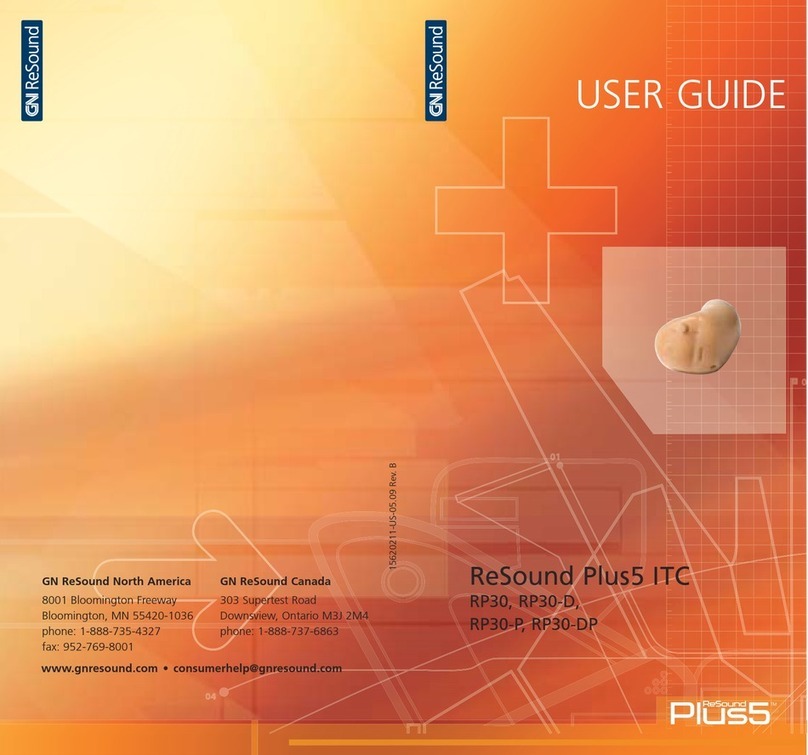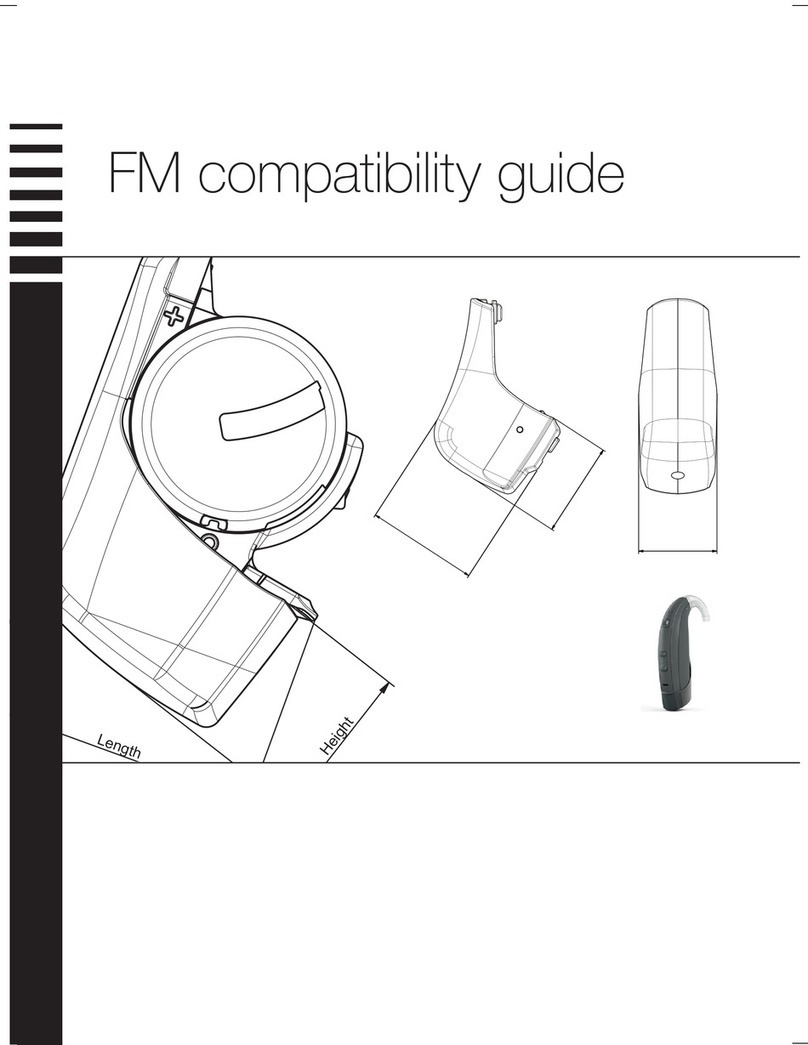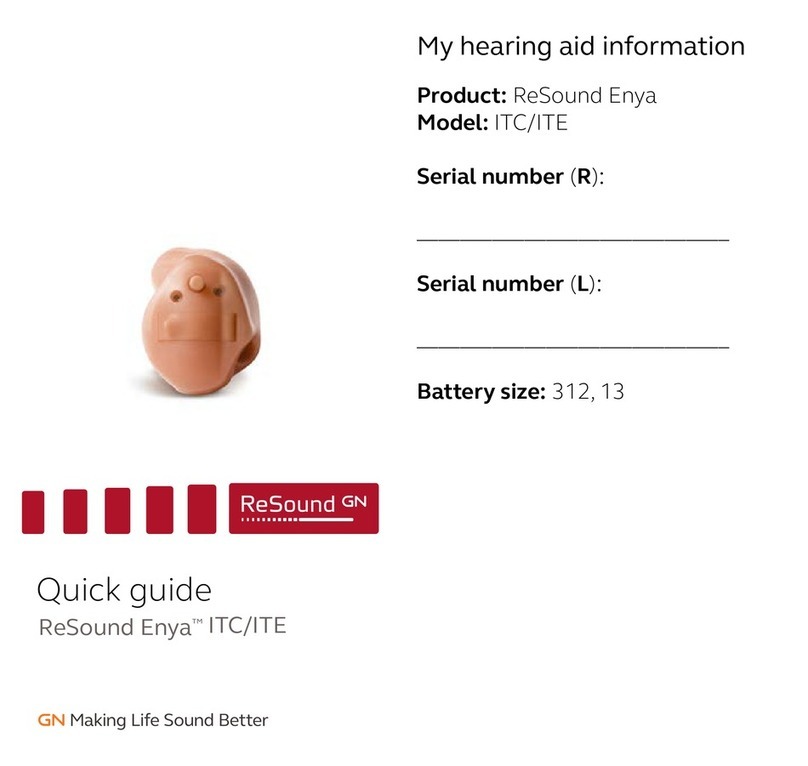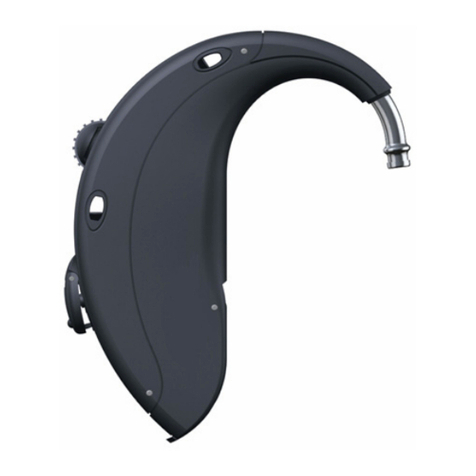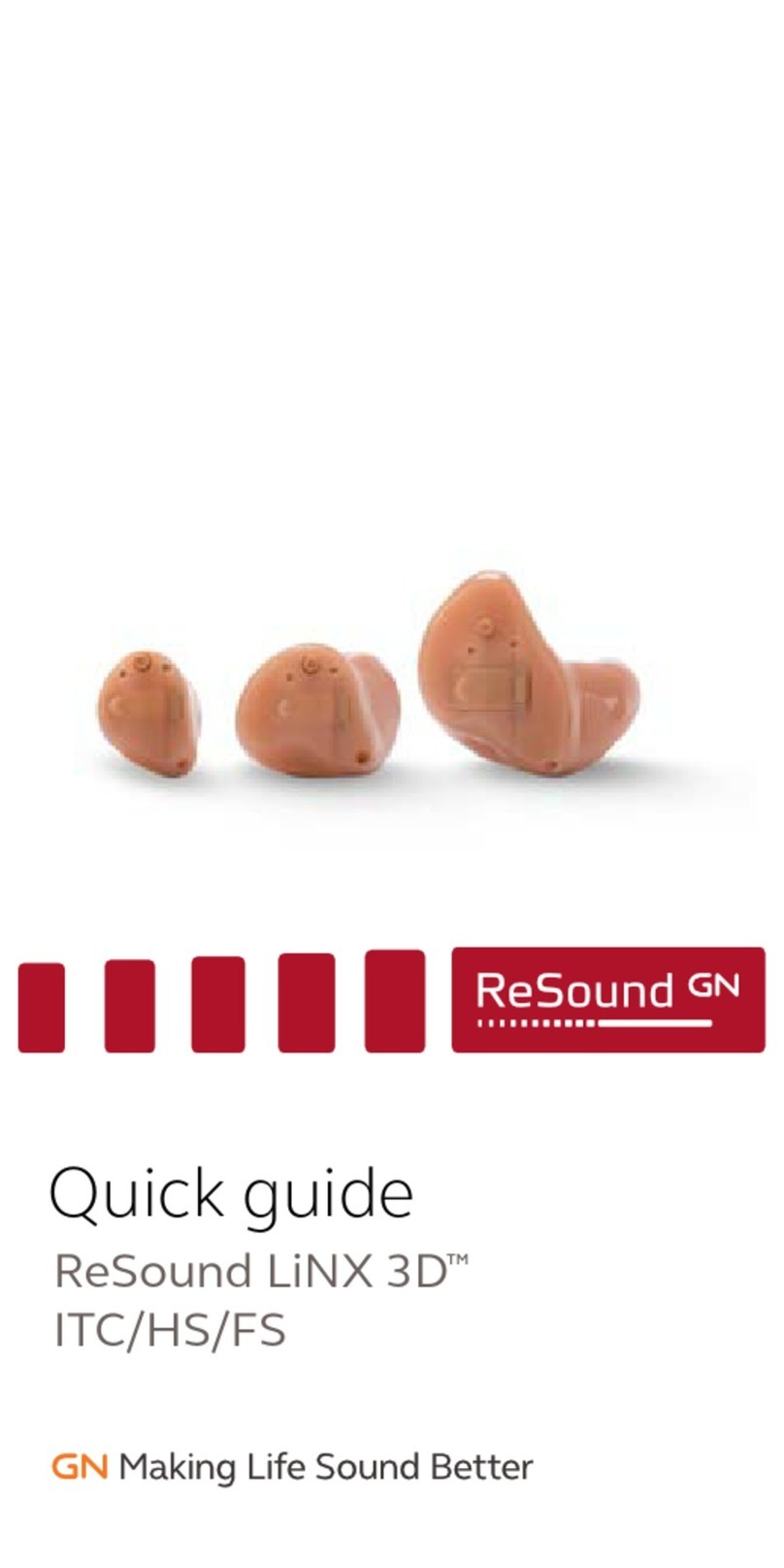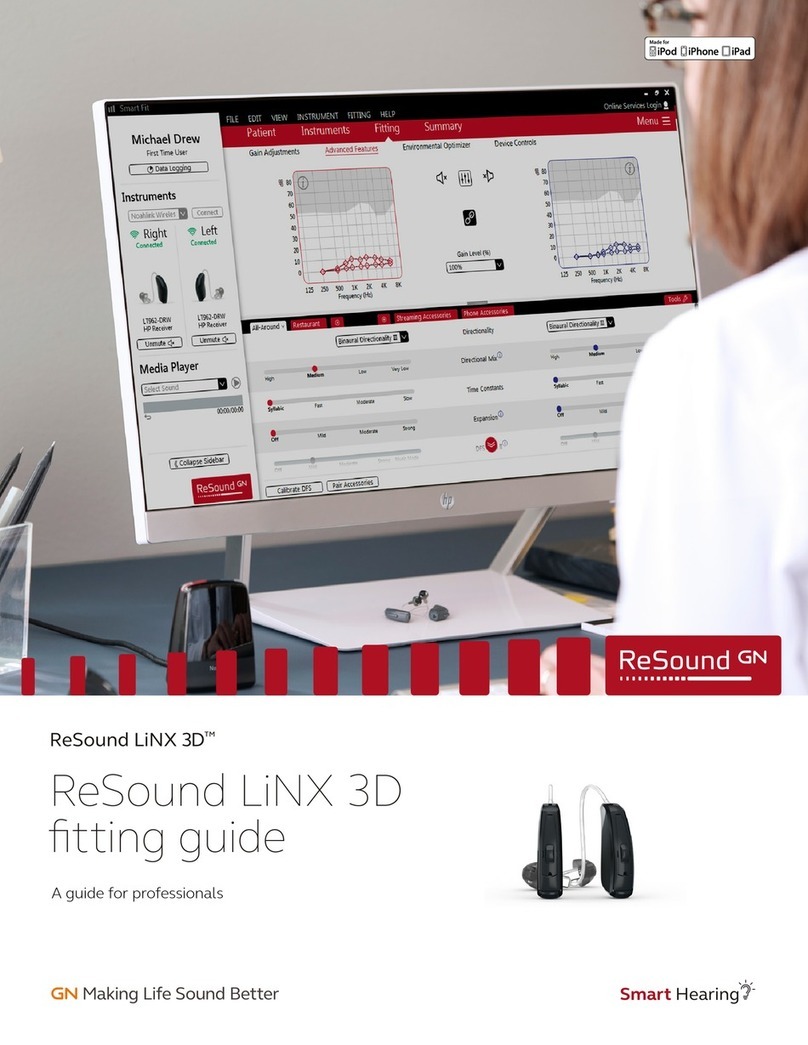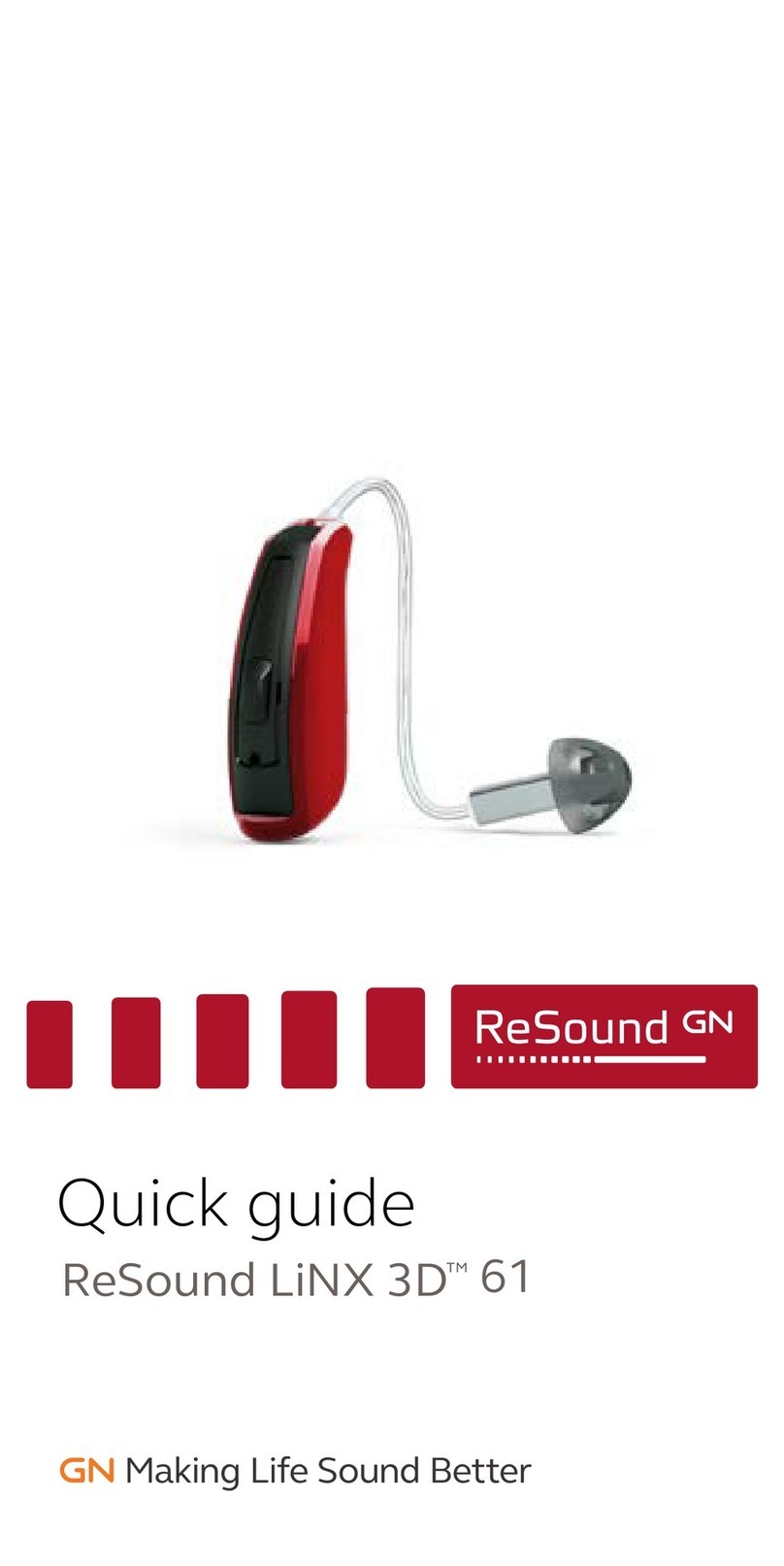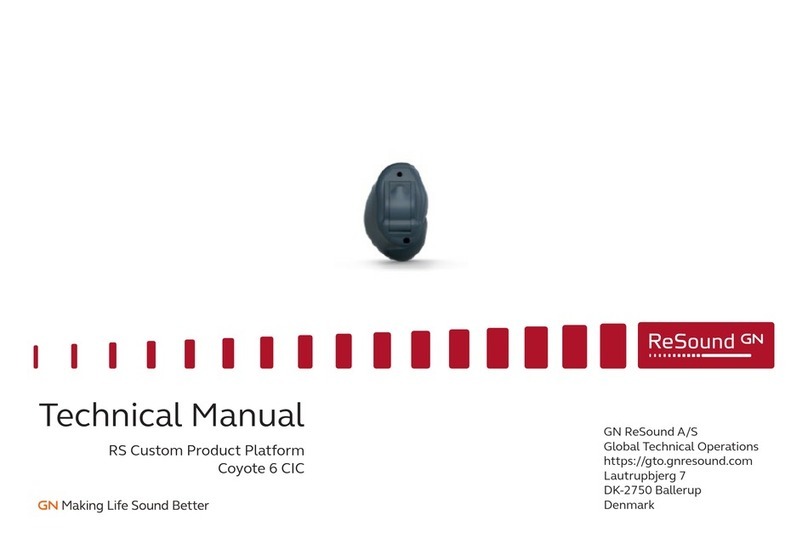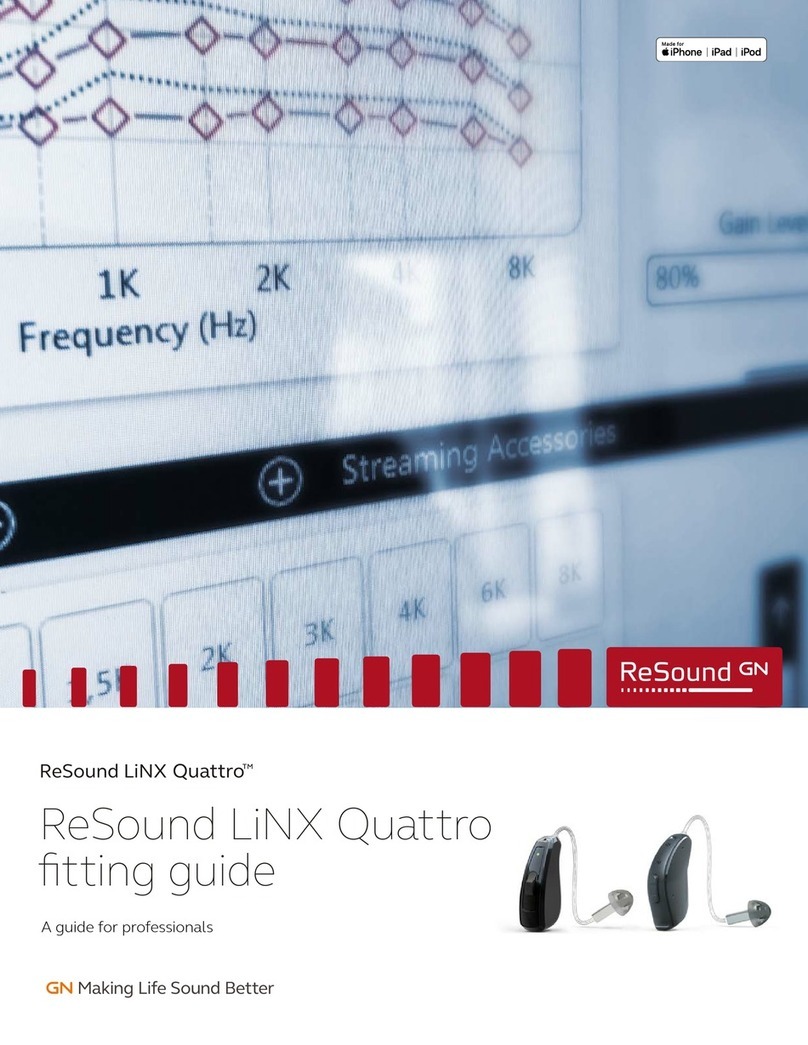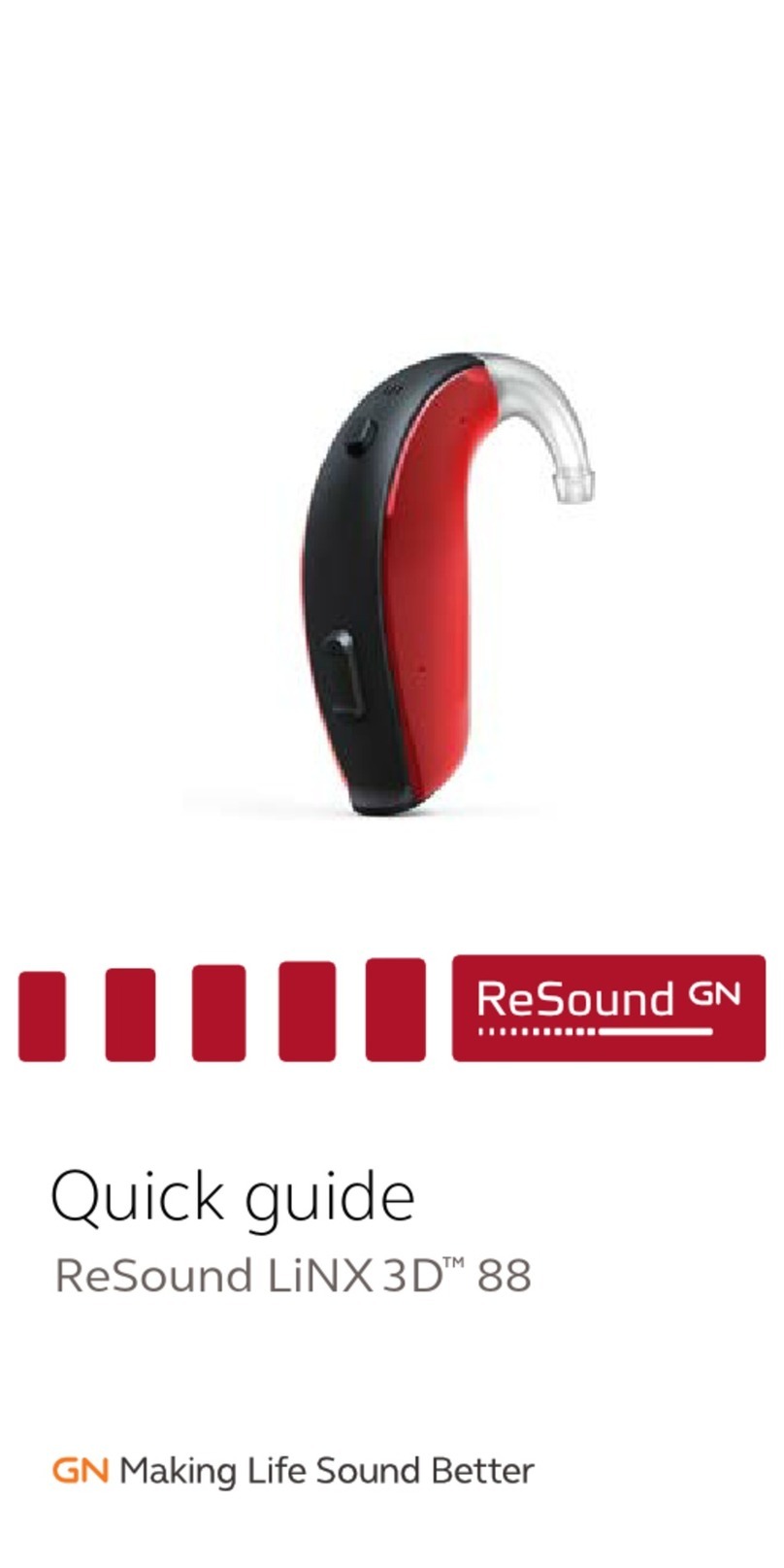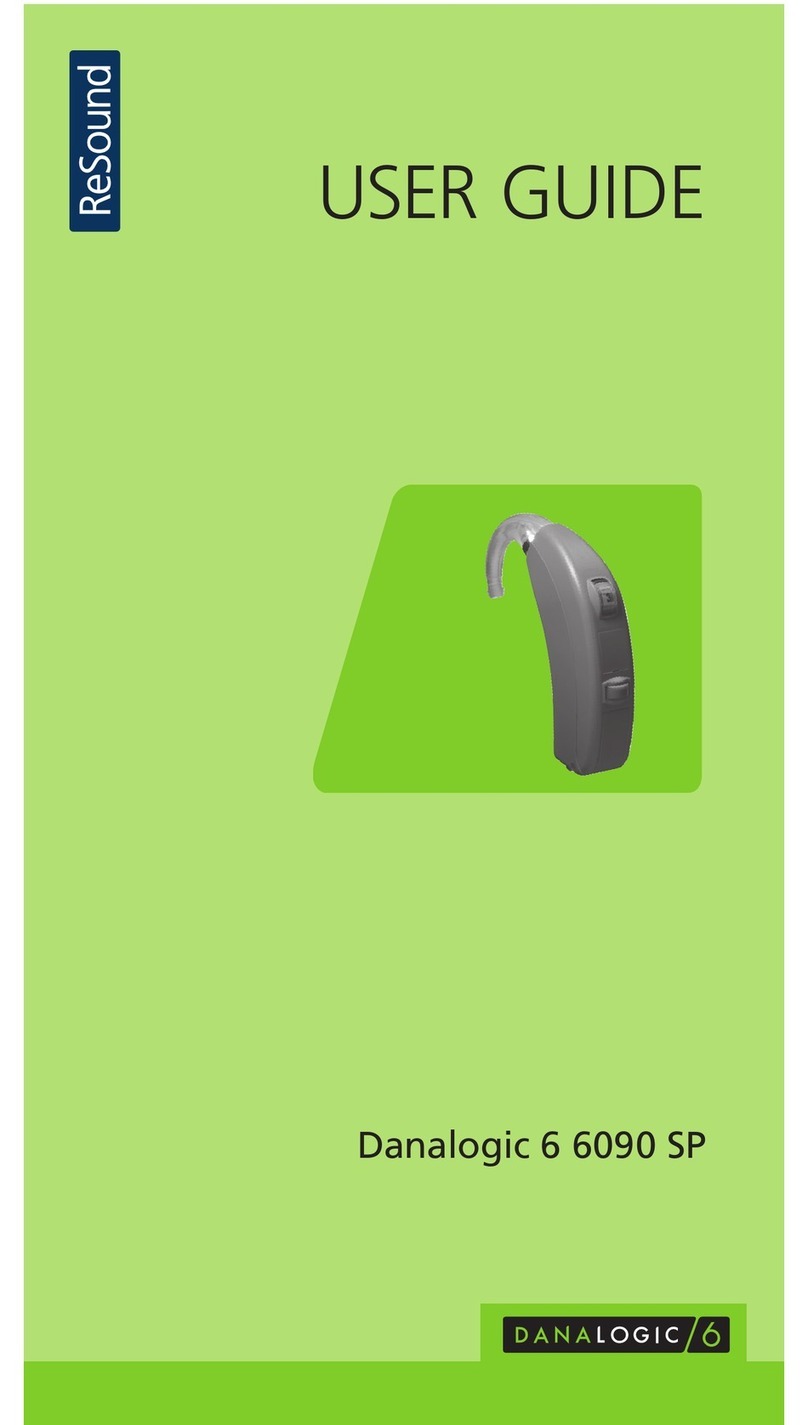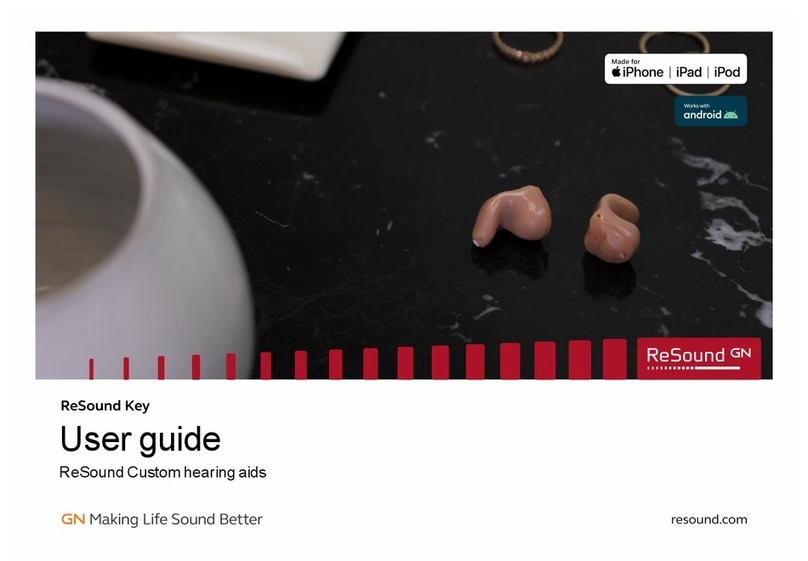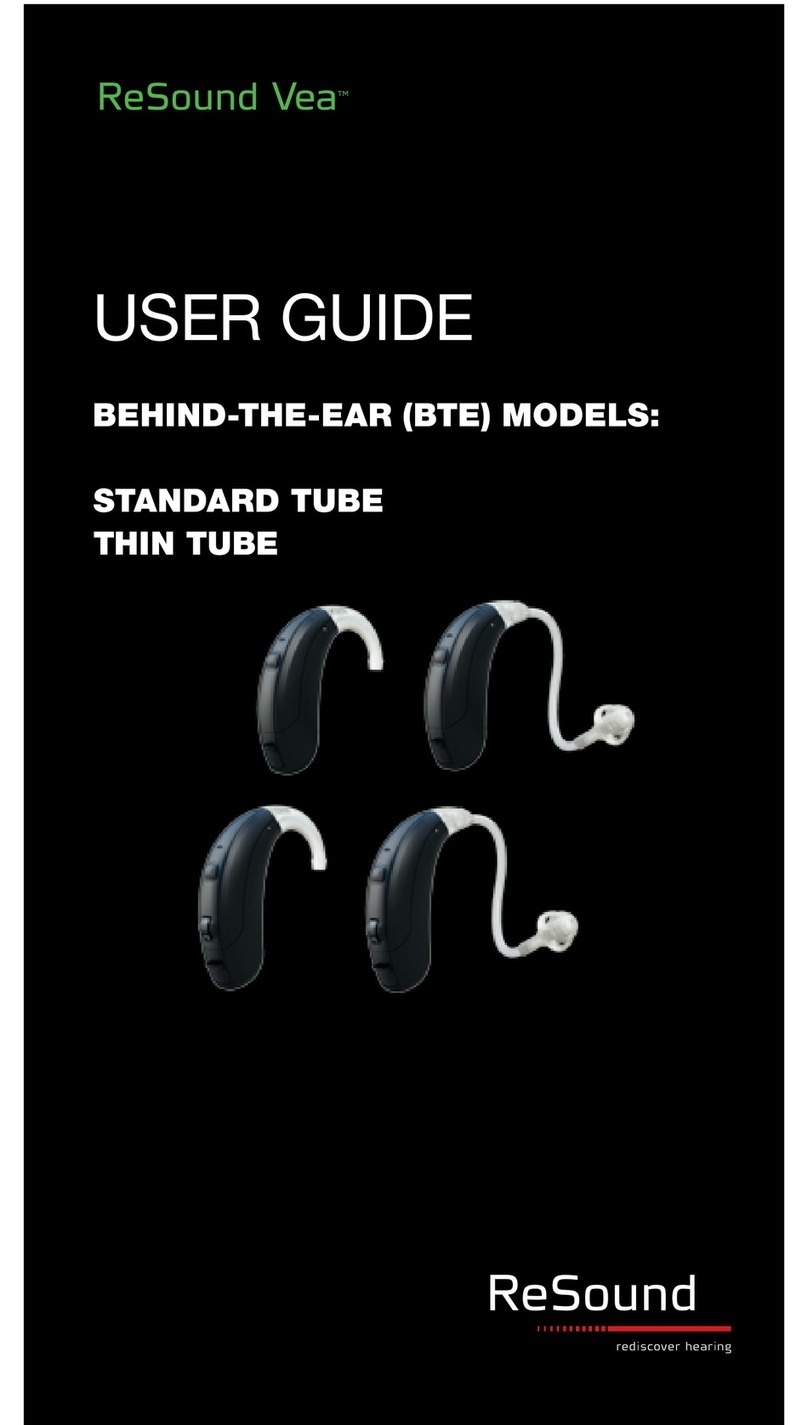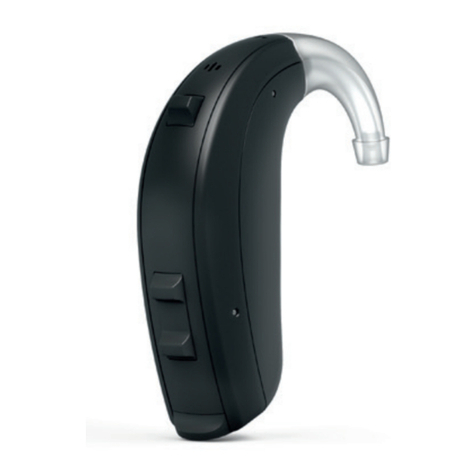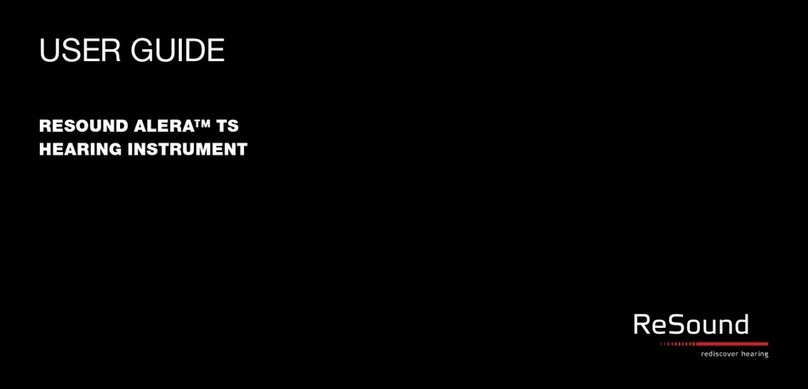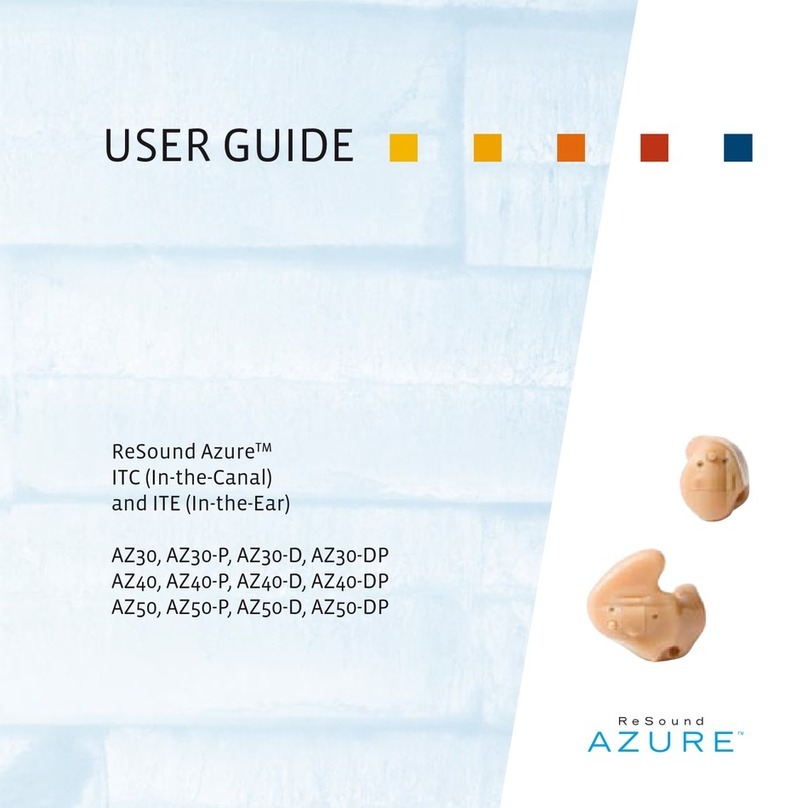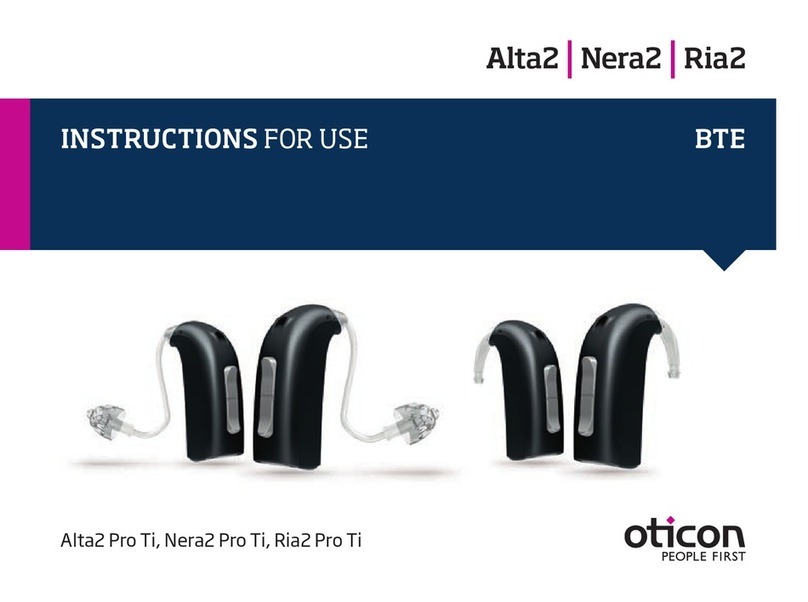9
General Warnings i
• When connected, the Aventa Fitting Software controls the acoustic amplification levels in a hearing instrument. In
some acoustic environments, over amplification can cause discomfort and damage to the patients hearing.
• The Fitting System provides initial default amplification settings based on hearing threshold levels. These default
settings could be higher than stable levels and cause feedback when amplification is first applied.
• The Fitting System initiates the feedback calibration procedure. Feedback calibration uses broadband noise to
measure the amount of sound leaking from the hearing instrument. The output level is designed to be on the
boarder of “uncomfortable” level based on hearing threshold level at a specific frequency. The sound will be
ramped up in volume and cease when the calibration data is received. It is possible for the level to exceed a pa-
tients comfort level, but it needs to be determined if it can obtain hazardous risk levels.
• The Fitting System initiates feedback calibration to measure the receiver to microphone transfer function. This is
used primarily by the hearing instrument to manage feedback suppression but it is also used to display the limits
of stable gain.
• The maximum stable gain estimates are based on feedback calibration data, the presence of active feedback sup-
pression, and a headroom estimate. The headroom value is meant to be conservative however the presence of
directionality has shown to give inaccurate estimates of max. stable gain. The risk is that, under some situations,
the Fitting System could show that the hearing instrument is stable when it is actually close to unstable and in risk
of feedback.
• If feedback calibration has not been performed during fitting the Max Stable Gain is not known and the device
could cause feedback without warning.
• The Fitting System uses the Audiogram+ algorithm to interpret audio gram data for determining optimal gain set-
tings. The parameter used is “first time user”. This may give a less than optimal initial fitting but should not pose
a safety risk. The algorithm has been independently validated with the specification and verified to be consistent
with Fitting Software.
• The Fitting System uses feedback calibration measurements to compute Max Stable Gain values. These values
are an estimate of the amount of gain that can be safely applied to a hearing instrument be fore it begins to cause
feedback. There is a warning when this gain is reached, and the over gain values are highlighted with bold, red
text. The safety margins give a “close” approximation of the actual feed back border. However, it’s an estimation
and feedback can occur before the warning is given. Sustained feedback on high power devices can damage
residual hearing.
• Warning to hearing care practitioners: Special care should be exercised in selecting and fitting hearing instrument(s)
whose maximum sound pressure level exceeds 132 dB SPL with an IEC 60711: 1981 occluded ear simulator, be-
cause there may be a risk of impairing the remaining hearing of the hearing instrument user.
• Warning to hearing care practitioners: Special care should be exercised in selecting and fitting hearing instrument(s)
utilizing Tinnitus Sound Generator. The maximum output of the tinnitus sound generator feature falls into the range
that can cause hearing loss according to OSHA regulations. For further details please consult the user guide of
the relevant hearing instrument that includes the Tinnitus Sound Generator feature. In accordance with NIOSH
recommendations the user should not use the sound generator for more than eight (8) hours a day when this is set
to a level of 85db SPL or above. When the sound generator is set to levels of 90db SPL or above the user should
not use the sound generator for more than two (2) hours per day. In no case should the sound generator be worn
at uncomfortable levels.
• Children and physically or mentally challenged users will require guardian supervision while wearing the device.
